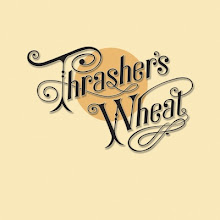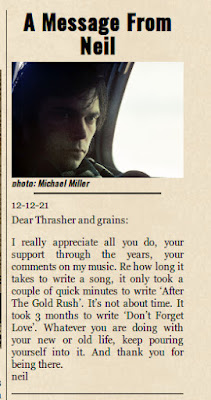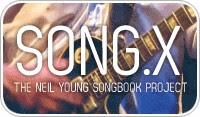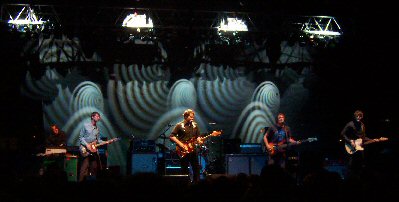The Making of The Neil Young Archives

Needless to say, the making of The Neil Young Archives Vol. 1 1963-1972 has been unquestionably a quixotic quest that is unprecedented in the history of commercial music releases.
We've given you our thoughts on what the Archives really represents critically speaking. But there were a number of key players behind the scenes over the past twenty years developing the revolutionary "Shakey Platform" - the technology driving The Archives.
Now -- at last it can finally be told -- here's the story behind the music: the making of The Neil Young Archives (NYA).

The Archives Vault
An Undisclosed Bunker Location
Over 20 years in the making, The Archives have been discussed, debated and eagerly awaited by fans ever since Decade -- the 3 LP career retrospective released in 1977. The next chapter was to be Decade II covering the next 10 years up to the late 1980's. From the Village Voice in 1989:
"Young feels he will be vindicated by this seven-CD anthology he's preparing for next year, his 25th anniversary in the music business. A compilation of approximately 100 songs - nearly half unreleased material - Decade II will encompass the original Decade, deleting some songs and adding some new ones, and then take on Young's work in the '80s.
'It's a big task, it wears me out just thinking about it,' says Young. 'I'd rather be making new music. But I want to set the record straight as much as I can. Through outtakes and chosen cuts I'm going to try to bring out more of the feeling that's hidden in those records. I think I can enhance the experience by putting them all in a long line, shortening them, and changing them.'"
Year after year, rumors came and went of the project being on or off or on hold. As time marched on, The Archives seemed to grow in scope and complexity. Finally, it had become somewhat of a morbid joke amongst fans with the Archives being referred to -- as Neil himself put it -- "The Bus Crash Tapes".
But then things looked as if The Archives might actually be released. From interview in Los Angeles Times by Randy Lewis:
"It's like a little tickle of some kind -- I don't know what it is -- to be able to find all these things you never knew about. They exist," he said, "so to be able to get through that in a way that enables you to enjoy it, and turns it into some experience that's not like going through a database -- that was the challenge of the boxed set. To make it like people actually had an album, an old vinyl album with a lot of liner notes."

Joel Bernstein, NYA Archivist
Neil's long time archivist Joel Bernstein has stated that the original analog tapes were transferred to digital at least four times -- and that was from a report in the '90's.
The analog restoration and analog to digital transfers were handled by John Nowland at His Master’s Wheels in Woodside, CA and digital editing and mastering by Tim Mulligan at Redwood Digital, also in Woodside, CA. The sonics of the 24-bit, 96kHz digital audio resolution is considered to be an unsurpassed achievement in sound quality or as TONEAudio MAGAZINE's Bob Gendron succinctly puts it: Digital has never been better."
John Nowland tells Universal Audio Webzine:
"Neil called me back in 1990 and asked me to do some transfers for him, from analog to digital. He thought that was going to be a two- or three-week job; somebody else thought it was going to be a two- or three-month job. And I've been here ever since."

John Nowland (left) w/ Will Shanks and the Green Board
Over time, the project eventually moved towards being released on the DVD format. Apparently, a release date was set but then the Bluray technology became available and the project was delayed once again. The original DVD author, Rich Winter (with Blackbird Digital) worked with MX Productions (who mastered the Bluray discs) to realize Neil's original vision of navigating while listening.

Ben Johnson sets up a scene
Shakey Pictures and Total Media Group worked over four years sorting through the massive amount of archive material used to create the menu design and page structure under the guidance of Neil Young and his executive producer, L.A. Johnson. The team first revealed a preview of the project at the Sun Microsystems JavaOne Conference in May 2008. Sun Microsystems develops Java, Blu-ray’s programming language.

Total Media Group's Toshi Onuki, Creative Director, recently said:
"People have spoken about the scope of this Archives as literally putting Neil Young's life in a box. But, in truth, we bring Neil's life out of the box, and allow the listener to explore and experience it. We pushed the creative boundaries in hardware and software in new ways to capture the essence and detail of the expansive universe of Neil's life and work."
With 128 tracks, over 13 hours of video content, more than 3,000 menus and 10's of thousands of navigation path codes, NYA represents a fundamental shift in how fans interact and immerse themselves in a musical experience.
Toshi Onuki blogs:
"The idea for the main program was developed with Neil when we worked on Greatest Hits album CD/DVD in 2004. We came up with the idea of video as “furniture” because visual footage for the recording did not exist. I thought of each scene as a diorama like you would see in a science museum.
We set up the original player for when the song was recorded - reel-to-reel, vinyl, cassette, and set up surrounding memorabilia and photos that were carefully picked by Neil. We taped the diorama in HD here at Total Media Group. I believe each visual scene has significance to Neil Young specific to each song.
I think the video of moving turntable is really seductive and it feels like looking at fireplace to me. The quality of the Blue-ray disc is phenomenal. I can see Neil’s fingerprints and dust flying around in the space. Neil Young’s studio also made a replica of the original tape, re-spliced and put on the original reel. That’s why you can see VU meter moving in sync with Music.
I think part of my inspiration came when I was first introduced to the project. There was a sense of obsession.

Toshi Onuki continues:
In 2004, I had a meeting with producer L.A. Johnson and archivist / photographer, Joel Bernstein (who has managed Neil Young’s archives for decades). Joel handed me a binder as thick as a yellow phone book labeled “NYA Vol. 1 Disc 1” and explained about the project and his existing database. The conversation and descriptions went on and on for few hours I remember. It was just exhausting and overwhelming.
If the Blu-ray viewer can get the similar sensation like I had on that day, I think the Neil Young Archives are working the way they should be. Interactivity was the most important aspect in the design because we want the viewers to explore, learn and investigate without getting lost. I also wanted this to be as organic and realistic as possible. From the beginning, I was opposed to graphic treatments because I wanted to create a photo realistic environment with a sense of space so that you will feel the archives as they exist in front of you.
I really like the idea of the file cabinet with the exaggerated cabinet drawer (it opens about 5 feet out) because we can throw anything inside and maintain the integrity of the purpose of the file cabinet: organization.
To me, the Neil Young Archives Vol. 1 exists in a black box and we are opening only a portion of an endless expanding drawer. I like the humor and the idea of turning an ordinary object to an extreme object. I did not want to create anything new, I wanted to preserve the way things are.
That was my basic design concept.
I visited many museums to learn how documents and artifact are shown there. For the assets gallery pages, I used similar black fabric and placed the items on top because that’s what the museums use to display precious objects.
The song selection menu is an opened drawer with bunch of folders. On the tabs, you can find the collections of song titles, with Neil’s handwriting, taken from original manuscripts.
This is my tribute to Joel’s collections.

From Guitar Player, Shakey Pictures Larry "L.A." Johnson:
It’s ironic that recording technology has gotten to the point where it can finally offer such realism, and yet the popular delivery medium is designed for a data-compressed mp3.
“We had cameras around all the time, because Neil has always been interested in film,” said Johnson. “And we’ve been assembling all this stuff for decades, but we waited until technology caught up with what Neil envisioned for the Archives. He didn’t want this material released on videotape, and he wasn’t all that happy with DVD. It wasn’t until Blu-ray where we thought the media would do the material full justice, visually and sonically.
There are many fascinating insights in the technical production such as this on Riverboat Recordings by Archives Guy:
The Riverboat disc needed a lot of work to correct speed and pitch issues.
Here are some details on that process:
This Archives Blu-ray/DVD disc has been compiled from the original 2 track, ¼” analog Riverboat master tape reels, which were recorded at 15ips.
The HDCD® 24-bit 192kHz digital transfers were edited into an assembled program and then sample rate converted to 24-bit 96kHz for audio restoration after it was discovered that the original recordings had varying and uneven speeds.
Through the series of performances, tape speed was found to vary 4% overall and at times as much as 2% during the course of a single song. Audio restoration techniques solved these inconsistencies and brought the program to correct pitch.
After the speed correction process was completed, the audio program was then edited and mastered at 24-bit 96kHz, becoming the DVD master.
In the case of Blu-ray, the audio program went through a final upsampling after the 24-bit 96kHz mastering. This final stage, utilizing a Pacific Microsonics HDCD® Model 2 processor, resulted in the 24-bit 192kHz Blu-ray master.

Archives Storyboard
And here's some more NYA trivia on the "Behind The Barn" interview:
When the surround mix was created for the interview, we located the spot behind the barn where Neil had been lying and set up 5 Neumann mics in a surround array. Then we placed two big PA speakers where the original truck had been and played Words thru them at full stun.
This created a natural surround recording, bouncing off the hills just like in the original moment. The new recording was mixed with the original interview to create the same experience for the listener that Neil had.

More NYA production trivia from Archives Guy:
Each of these tape reels are the actual, original tape reels, not fakes used for video purposes.
John Nowland at Redwood Digital made exact copies of each original tape including splices, leaders etc so what you are watching looking just like the master and is spinning on the original reel.
You will also notice the meters moving on the tape decks. This is because we were really playing the tapes during the video shoot.

Also, see:
- Thrasher's Wheat's Review: of The Neil Young Archives Vol 1 (1963-1972)
- Archives Opinions and Commentary Open Thread
- Everything You've Ever Wanted To Know about The Archives But Were Afraid To Ask.
Labels: neil young, neil young archives































 Human Highway
Human Highway

















 Concert Review of the Moment
Concert Review of the Moment





 This Land is My Land
This Land is My Land

 FREEDOM In A New Year
FREEDOM In A New Year









 *Thanks Neil!*
*Thanks Neil!*




![[EFC Blue Ribbon - Free Speech Online]](http://www.thrasherswheat.org/gifs/free-speech.gif)











 The Unbearable Lightness of Being Neil Young
The Unbearable Lightness of Being Neil Young Pardon My Heart
Pardon My Heart



 "We're The Ones
"We're The Ones  Thanks for Supporting Thrasher's Wheat!
Thanks for Supporting Thrasher's Wheat!




 This blog
This blog 
 (... he didn't kill himself either...)
#AaronDidntKillHimself
(... he didn't kill himself either...)
#AaronDidntKillHimself









































































 Neil Young's Moon Songs
Neil Young's Moon Songs




 Civic Duty Is Not Terrorism
Civic Duty Is Not Terrorism Orwell (and Grandpa) Was Right
Orwell (and Grandpa) Was Right


 What's So Funny About
What's So Funny About 



22 Comments:
Someone should take up the task to do an in depth interview of Mr. Joel "curator to the stars" Bernstein.
He has some much intricate knowledge on this project, knowing exactly where all the bodies are buried.
It would be a treasure-trove of information.
Thanks for some great sunday reading, Thrasher. Very nice work.
THANK YOU TW!!GREAT INFO!!
Rancho Relaxo
interesting read, t, loved it, thx! lovekaren
That was a terrific compilation, Thrasher. Many thanks.
What I'd like to see now is a "business" version of the Archives story. I would really like to know how/why various decisions were made - how the pre-release of the live albums was determined and when the concept changed from leaving an open spot in the Archives for the live releases to including them and even throwing in an extra concert.
-why three acoustic concerts and only one less-than-complete Crazy Horse concert.
-why 90% of the remastered cuts were included (I know, I know...but someone should just come out and say it.)
I'm not asking for this to rip on anyone, but here's what I'm afraid of, that the quest for audio fidelity has become the overriding factor in determination of what does and does not get into the archives, to the point where the nerdo Steve Hoffman types are the primary target audience. How else to explain some of the omissions from the first Archives set?
As we journey into the heart of the ditch, I hope that passion rules, instead of technical perfection. I would vastly rather hear "Bad News" with guys talking in the background when the performance itself is so hot that it burns up the stereo, than a lesser version included because the tape was in better shape. Ditto "Stringman" from R&R Cowboy rather than "Unplugged" and how many others?
I'm not against fidelity. I don't disagree that "Sound matters." It's just that other things matter a lot more and Neil Young has never been about technical perfection. He's been about passion and poetry and the sheer joy of gut-busting hot shit rock & roll. I, personally, would like to see that spirit reflected in the next versions of the Archives.
Ultimately, of course, I'll buy and love whatever they come up with, but I'm not about to throw away my bootlegs, either.
Nice!Thank you.
"....volt meters?..nobody cares about volt meters....you guys don't care about volt meters, do ya?"
This archives thing, just get's bigger the more we know about it.
"It's gonna take alot of love..................."
Neil = LOVE. It's in there.
I don't know about y'all.But I am just DROOLING over that pic taken inside the archives vault."Oh to live on Sugar Mountain"
Rancho Relaxo
Thanks T, I love the nuts and bolts stories; keep them coming!
But now I'm a wee bit confused with regards to Words film: did he or did he not lay on the grass an listen? Was the old film simply to faint or what?
designs.chicago
Chicago,
I think what they're saying is that in the original era film Words was played.
But for NYA, they re-created the background playback and dubbed it back in.
I'm with you Pinto....I love the Archives, but please, on vol.2- this all important phase in Neil's music, career and life, put in the important documents... the ones that when merely mentioned may exist, set us drooling. We have all the albums... and they are all being re-released sounding fantastic (and chances are we'll buy them again), so keep the archives for the treasures, the silver and the gold, the myths and the mysteries. Show the hidden documents- Shed some light on those shadows Neil! Materialize the rumors! Give the fans the diamonds in the ditch Neil! The never before RELEASED STUFF! Thanks Neil and team! and thanks Thrasher for a great read.
what's up with TOAST? I see that it is up on some pirate sites... has anyone heard it?
Yeah I got a copy!!.......
Man! it was totally burnt..bummer!
I'm sure it'll pop-up somewhere!
On topic DOC
T...you do an amazing service to the Neil fans; I mean I barely have time to read this condensed version, I'd never be able to find ,assemble and disect it all on my own...so again, thanks!
I noticed that the volume of Words (behind the Barn) is lower on the Archives than it is on the Harvest re-issue DVD... I much prefer the effect on the Harvest DVD than the archives.. it sets the stage so much better...(although Archives has more footage) just a personal preference. jim
back in the late 80s,my former employer got an order for hundreds of dollars worth of harmonicas, to be sent to "Neil Young"--the "send to" address was Woodside CA...that may be where the bunker is...
Before anyone gets excited, there are no copies of TOAST on any pirate sites nor anywhere else in the world.
fact.
-Archives Guy
Harvest Barn interview-
The Harvest DVD-A version is in stereo and 5.1
The NYA version is just the stereo and is a few dB quieter to match other video content levels.
-Archives Guy
Thanks for clearing that up AG!
Archives Guy.If you're still listenin'.?Don't get me wrong.I'm still enjoying Archives vol.1.It's AWESOME!!But I've got a big big problem.My "Greedy Hand" is terrible.I need help.Can you at least give us a hint about what Neil's next release is going to be??I feel something might be on the way.Am I wrong?
Rancho Relaxo
I'm puzzled by the information on the Riverboat show:
"The HDCD® 24-bit 192kHz digital transfers were edited into an assembled program and then sample rate converted to 24-bit 96kHz for audio restoration . . .
After the speed correction process was completed, the audio program was then edited and mastered at 24-bit 96kHz, becoming the DVD master.
In the case of Blu-ray, the audio program went through a final upsampling after the 24-bit 96kHz mastering. This final stage, utilizing a Pacific Microsonics HDCD® Model 2 processor, resulted in the 24-bit 192kHz Blu-ray master."
I don't see how the resulting blu-ray can be any better than the DVD. It's my understanding that once you downsample, the information is lost and can't be replaced by upsampling. I assume the same process was not used on all the b-d discs. Can you shed any light on this?
Thrasher’s Wheat being pretty much the one-stop shop for all Neil Young info, I was surprised to see that you very rarely, if ever, mention Neil’s long-time album designer and friend, Gary Burden, especially in this “making of” post. Gary’s been with Neil since After the Gold Rush in 1970 and was with him every step of the way during the “making of” the Archives. Maybe, hopefully, it was just because Gary didn’t really have an internet identity, but I stumbled upon his personal blog (http://garyburdenforrtwerk.com/) the other day while looking for information about the design process behind the Archives. Really killer stuff, and you guys pretty much need to check it out. I wonder if you could even contact Gary for a story to publish on TW? That would be awesome!
Post a Comment
<< Home